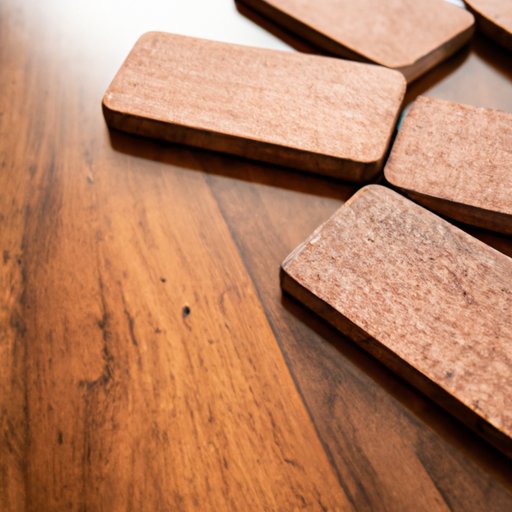
I. Introduction
If you’ve ever left a glass of water on a wooden countertop or forgotten to use a coaster on your dining room table, you’ve probably encountered the pesky problem of water stains on wood. They can be unsightly and difficult to remove, but fear not. This article is your guide to get water stains out of wood, step-by-step. Whether you’re a homeowner, renter, or wood enthusiast, this guide will provide you with valuable knowledge and tips to rid your wood surfaces of water stains and prevent them from reappearing in the future.
II. Step-by-step guide to removing water stains from wood
Before we dive into the step-by-step guide, it’s important to understand the different types of water stains and how to identify them. White stains, for example, are the result of water being trapped in the finish, while black stains are caused by water penetrating the wood itself. Once you’ve identified the type of stain, you can select the appropriate method for removal.
You’ll need some materials and tools to get started. These include a soft cloth, fine-grade sandpaper, steel wool, a heat source (such as an iron or hair dryer), and some common household products such as vinegar, toothpaste, or baking soda. Each method will require a slightly different set of materials and tools, so be sure to read thoroughly before getting started.
When working on removing a water stain from wood, be sure to follow the instructions carefully and keep a few tips in mind. Always test your chosen method on a small, inconspicuous area of your wood surface before proceeding with the full stain. Be also sure to apply any treatments promptly, as timing is critical.
III. Different techniques for removing water stains from hardwood floors
Hardwood floors are particularly challenging to remove water stains from, so it’s important to use the right method for your specific situation. Sanding is often the go-to method, but there are alternative approaches. For example, using a steel wool pad can work wonders if used properly, while a vinegar and water solution can be used on light water stains. Each method has its benefits and drawbacks, so it’s important to choose the right one for your specific type of hardwood floor.
IV. Tips and tricks for preventing water stains on wood surfaces
Of course, the best way to deal with water stains on wood is to prevent them from happening in the first place. There are plenty of preventative measures you can take to avoid water stains, from using coasters and mats to wiping up spills immediately. Humidity can also be a big factor, so consider using a dehumidifier in places where you have wood surfaces. Sealing your wood surfaces is also a great idea, providing added protection against water damage.
V. Natural remedies for removing water stains from wood
If you’re seeking a natural, chemical-free approach to removing water stains from wood, you’re in luck. Several natural ingredients can work wonders, including lemon juice, baking soda, and olive oil. Each has its own unique properties and benefits, but all can be effective when used properly. Remember to follow any instructions carefully and test the remedy on a small area first.
VI. Products that effectively remove water stains from wood
If you’d rather rely on store-bought products, there are plenty designed to remove water stains from wood. However, not all products are created equal, and some may be more effective than others depending on the type of stain and wood surface. It’s important to take the time to choose the right product that matches your specific needs. This section will review some of the most effective commercial products available, highlighting their strengths and potential drawbacks.
VII. Conclusion
There you have it, a comprehensive guide to removing water stains from wood. Whether you have a small water stain on a table or a large one on your hardwood floors, there are solutions available. Remember to identify the type of stain, choose the method that’s right for your particular situation, and follow any instructions carefully. By being proactive with prevention techniques, such as using coasters or a dehumidifier, you can keep your wood surfaces in top condition for years to come.




